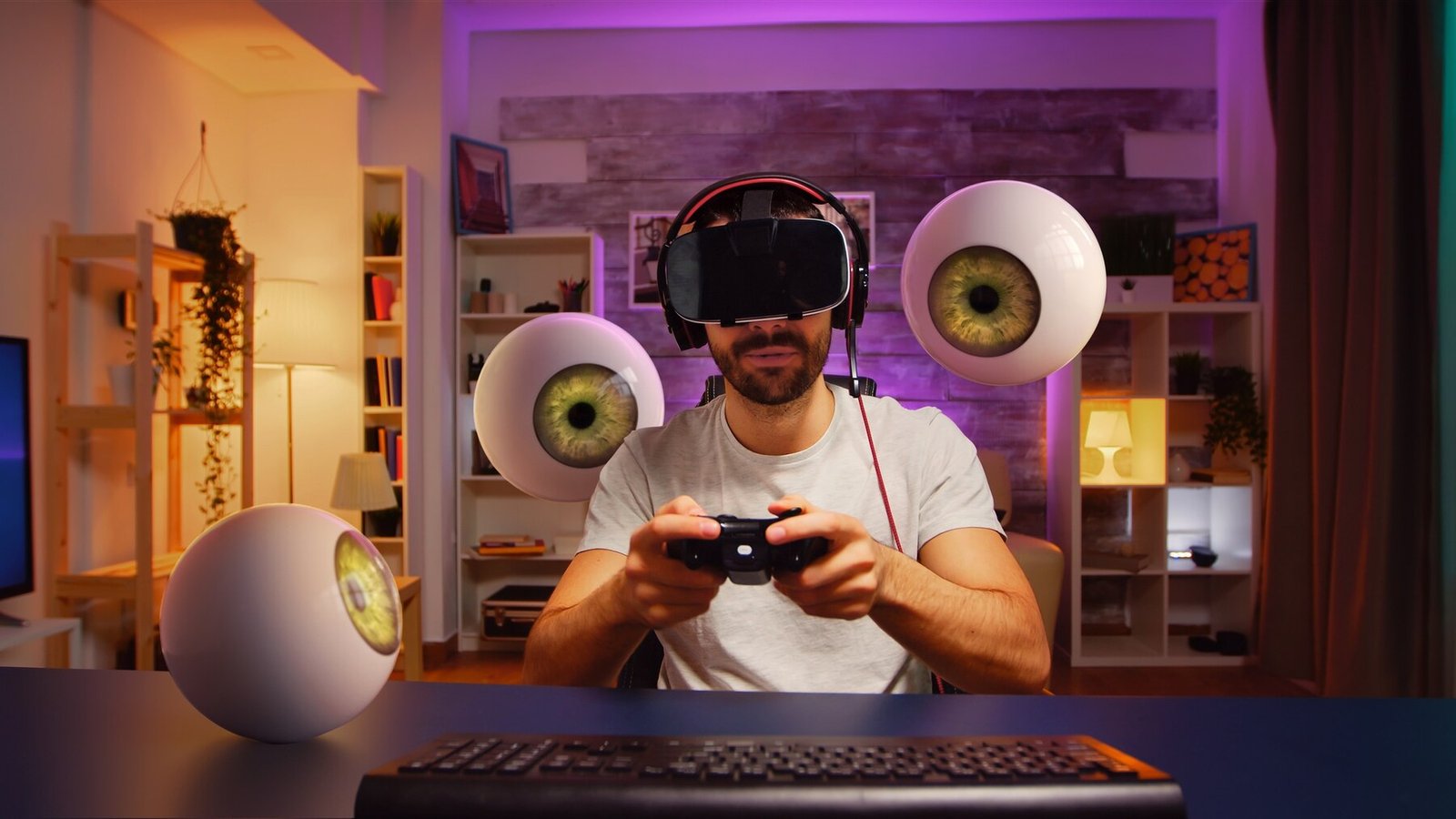What is Harmonicode Gaming?
Harmonicode gaming is an innovative concept in the realm of interactive entertainment that seeks to redefine how players engage with video games. At its core, harmonicode integrates sound, music, and gameplay mechanics, giving rise to a multifaceted experience that differentiates it from traditional gaming models. The term “harmonicode” encapsulates the essence of harmonics—where sound frequencies interact and resonate—and applies these principles within the gaming environment.
This paradigm shift emphasizes the auditory experience as a dynamic component of gameplay. In harmonicode gaming, every sound element, from background music to sound effects, is purposefully designed to enhance player interactions. For instance, the way a character moves or an object is manipulated can produce specific harmonics, thereby creating a responsive environment that feels alive. Unlike conventional games that primarily rely on visual stimuli, harmonicode elevates the auditory senses, engaging players on multiple levels.
Technologically, harmonicode relies on sophisticated algorithms and coding practices. These tools facilitate the seamless merging of audio and visual elements, allowing them to interact in real-time. The implementation of artificial intelligence and machine learning techniques ensures that sound variations evolve based on player choices, creating a personalized gaming experience. Developers utilize advanced sound synthesis methods to compose adaptive soundtracks that dynamically respond to in-game events, enhancing immersion. This forward-thinking approach stands in stark contrast to traditional gaming, which typically employs static audio loops and predetermined sound effects.
Thus, harmonicode gaming represents a significant evolution in the interactive entertainment landscape, setting the stage for future innovations and enhanced user engagement.
The Impact of Sound and Music on Gameplay
The significance of sound and music in harmonicode gaming cannot be overstated. These audio elements play a crucial role in enhancing player immersion, as they create an atmosphere that draws players into the gaming experience. Effective sound design not only sets the tone but also establishes the mood of the game, influencing how players perceive their environment and interact with it. For instance, ambient sounds in open-world games can evoke feelings of solitude or adventure, providing a backdrop that enhances the narrative journey.
Moreover, sound and music have profound effects on emotional responses during gameplay. The right score can elicit a range of emotions, from excitement during action-packed sequences to tension and fear in horror scenarios. Studies have shown that players often react instinctively to audio cues, which can determine their decisions in critical moments. For example, in a harmonicode game, a sudden change in the music may signal an upcoming challenge, alerting the player to prepare for an impending danger. This unspoken communication between sound and player behavior exemplifies the significance of audio in guiding gameplay mechanics.
Examining case studies from successful harmonicode games further illustrates the symbiotic relationship between sound and other gameplay elements. In games like “Celeste,” the music not only complements the visual aesthetics but also aligns with the platforming challenges, enhancing the overall experience. Players often report that the audio elements provide vital feedback, helping them navigate complex environments. Additionally, the interplay between sound and visuals adds layers to player engagement, highlighting how a well-crafted audio landscape can amplify the enjoyment and satisfaction derived from the game.

The Future of Harmonicode Gaming
As the landscape of interactive entertainment continues to evolve, the future of harmonicode gaming stands at the forefront of innovation. Emerging technologies such as virtual reality (VR) and artificial intelligence (AI) are poised to transform the way players interact with games, offering unique experiences that enhance user immersion and engagement. By integrating these technologically advanced elements into harmonicode design, developers can create environments that resonate deeply with players on various sensory levels.
Virtual reality, in particular, allows players to step into richly designed, simulated worlds that can be harmoniously tailored to their preferences. The ability to manipulate sound, visuals, and touch within these environments can lead to more interactive experiences that are directly responsive to player actions. Moreover, when harmonic principles are applied to game design, these virtual worlds can promote not just enjoyment but also emotional well-being. The use of soundscapes that resonate with players can create a calming experience or boost adrenaline, depending on the game’s context.
Artificial intelligence plays a pivotal role as well, enabling more dynamic gameplay through adaptive learning systems. These systems can analyze player behavior in real-time, allowing games to adjust difficulty, narrative paths, and cooperative dynamics to fit individual gameplay styles. This leads to a more personalized gaming experience that enhances immersion and satisfaction, further solidifying the role of harmonicode principles as the backbone of future games.
The evolution toward interactive and multisensory experiences also includes shifts in audience engagement strategies. Gamers are increasingly seeking out communities that foster collaboration and creativity. Developers can harness harmonic concepts to design games that transcend traditional gameplay, offering collective problem-solving experiences or creating narrative-driven events that encourage community interaction. As the gaming industry continues to embrace these emerging trends, the future of harmonicode gaming promises to redefine interactive entertainment in profound ways, paving the path for innovative gameplay paradigms.
Getting Started with Harmonicode Gaming: Tips and Resources
For individuals intrigued by the innovative realm of harmonicode gaming, delving into this niche requires a blend of creativity, technical skills, and a passion for sound-driven gameplay. Aspiring developers and enthusiasts are encouraged to explore a variety of resources that can facilitate their journey into this vibrant industry. First and foremost, many online platforms offer comprehensive courses covering game design fundamentals, coding languages relevant to harmonicode, and interactive gameplay mechanics.
Coursera, Udemy, and edX are excellent starting points for formal education on game development. Courses often provide a step-by-step approach to understanding how sound influences player experience and game dynamics. For those specifically interested in the coding aspects of harmonicode gaming, exploring languages such as C# or Python is crucial, as these are commonly employed in game engines like Unity and Godot. Resources such as Codecademy and freeCodeCamp can further bolster your programming skills.
In addition, familiarize yourself with sound creation and integration tools. Software like Audacity and FL Studio allows developers to craft unique soundscapes that enhance gameplay. Experimenting with these tools in personal projects can lead to innovative game designs that exemplify harmonicode principles. Additionally, engaging with communities such as GameDev.net, Reddit’s r/gamedev, or Discord channels focused on game development can provide invaluable networking opportunities and collaborations.
Seeking feedback is another vital aspect of developing in harmonicode gaming. Participate in game jams or workshops where you can showcase your projects to peers and industry veterans. Constructive criticism will help refine your game development skills and improve your sound integration techniques. By employing these resources and strategies, aspiring developers can successfully immerse themselves in harmonicode gaming and contribute to its evolving landscape.


